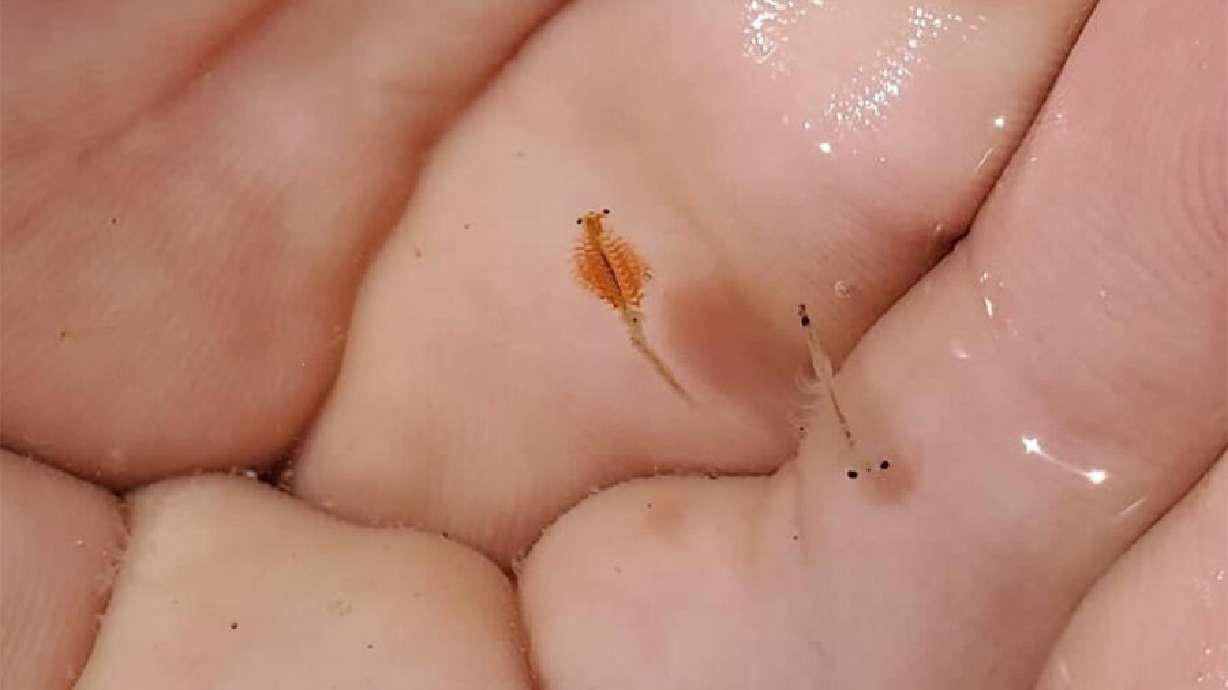Estimated read time: 3-4 minutes
This archived news story is available only for your personal, non-commercial use. Information in the story may be outdated or superseded by additional information. Reading or replaying the story in its archived form does not constitute a republication of the story.
SALT LAKE CITY — It was one year ago this month that Gov. Spencer Cox signed HB137, designating brine shrimp as the official Utah state crustacean. Before you laugh, it turns out there are plenty of reasons why we should not only recognize these small creatures but protect them in the Great Salt Lake, too.
So when we heard that the low water levels at the lake were hampering populations of this highly sought-after state jewel, we decided to investigate.
Brine shrimp 101
KSL Outdoors enlisted the help of our resident expert, Great Salt Lake Ecosystem program manager John Luft, to fill us in.
First, brine shrimp are not exclusive to Utah. They are found in salty waters around the world both inland and on the coast ranging in size from one-third to half of an inch.
Recent low water conditions have caused the salinity of the lake to reach levels that were hampering shrimp populations and left harvested eggs struggling to hatch.
Yes, you heard that right: harvested eggs!
We've already established the diminutive size of the actual shrimp, so imagine the size of the eggs, known as cysts.
Although outside companies do the harvesting themselves, the Utah Division of Wildlife Resources takes on a management role to closely regulate and manage the harvesting to ensure it remains sustainable.
Those brine shrimp companies are required to get a certificate of registration from the DWR in order to harvest the cysts. The certificate comes with a fee, funding Great Salt Lake research and a portion of the tax on the process to the Endangered Species Migration Fund that helps with wildlife conservation.
An average harvest would weigh in between 25-30 million pounds of cysts, but during the 2022-2023 season, it fell to 19 million pounds.
The good news is that the increased water levels from an above-average snowpack, along with some handy work done to repair a breached causeway, saw that production rebound to 29 million pounds this season.
The hatch rate jumped from 60% to 90%, making the Utah cysts among the most sought-after in the world.
Why you should care
Now to the reasons why it matters, or should matter, to all of us.
First, brine shrimp are a major food source for the more than 10 million migratory birds that make their way along the Pacific Flyway and make a rest stop in the waters of the Great Salt Lake.
It's a nutritional boost for the birds themselves before continuing on with nature's incredible instinctive process year after year. It also provides Utah's bird watchers and outdoor enthusiasts with an annual show that few places in the world get to enjoy.
That population of birds includes an estimated 2 million to 5 million eared grebes, which Luft tells us can consume 25,000 to 35,000 shrimp per day. The grebes' annual molting season occurs in the fall, leaving them flightless and dependent on the shrimp for food.
Speaking of food, one last point.
After harvested, dried and processed, these brine shrimp ship out worldwide to feed fish in aquariums and aquaculture farms.
So the next time you go to your neighborhood grocery meat counter or your favorite restaurant and you order salmon or shrimp, make sure to ask if they are wild-caught or farm-raised.
Chances are, if they were farm-raised, they got to your dinner plate in part because of the tiniest of creatures, your official Utah state crustacean, the mighty brine shrimp.
Now you know.









